#Archaeologia Bulgarica
Explore tagged Tumblr posts
Text
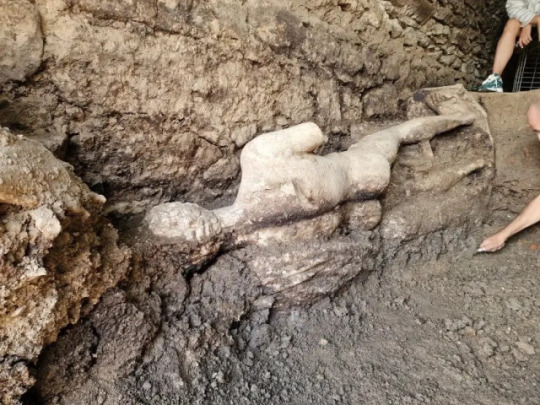
Archaeologists Unearth Remarkably Preserved Marble Statue of Hermes in Bulgaria
Archaeologists led by Prof. Dr. Ludmil Vagalinski have unearthed a remarkably well-preserved marble statue in the ancient city of Heraclea Sintika, near Petrich, Bulgaria. The discovery, announced by the municipality of Petrich, was found within the underground sewer known as "Cloaca Maxima". Efforts are underway to delicately excavate the statue without causing damage due to its exceptional state of preservation.
Standing over two meters tall, the statue is believed to depict Hermes, a prominent deity in the region during ancient times. Prof. Dr. Vagalinski, speaking to "Archaeologia Bulgarica," expressed cautious excitement about the find, noting its significance not only as the best-preserved statue discovered in Heraclea Sintika but also in all of Bulgaria. He suggests that the statue was likely buried by city inhabitants following a major earthquake in the 4th century AD, possibly to safeguard their religious heritage during the rise of Christianity.
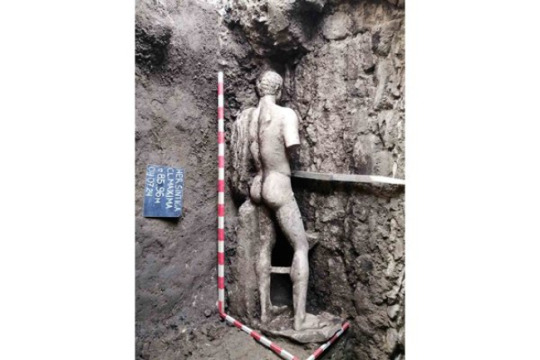
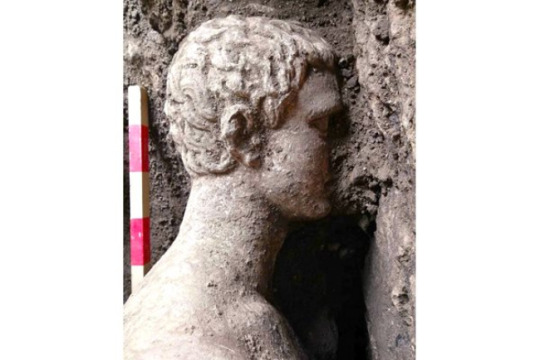
Archaeologia Bulgarica shared updates on the excavation progress via Facebook, revealing that the statue, crafted from a single marble block in the 2nd century AD, remains partially encased in dirt. Archaeologists have noted its resemblance to other depictions of Hermes, placing it within a known iconographic type. Similar statues are rare globally, making this discovery particularly unique for Bulgaria.
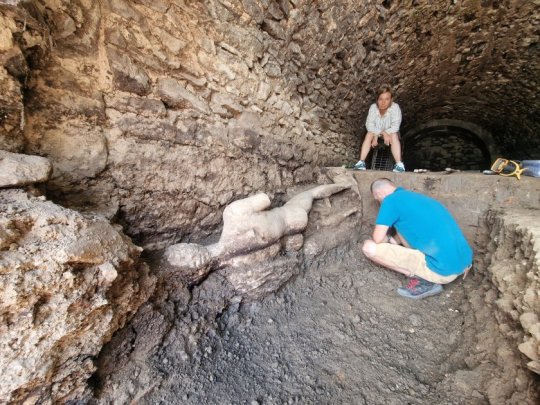
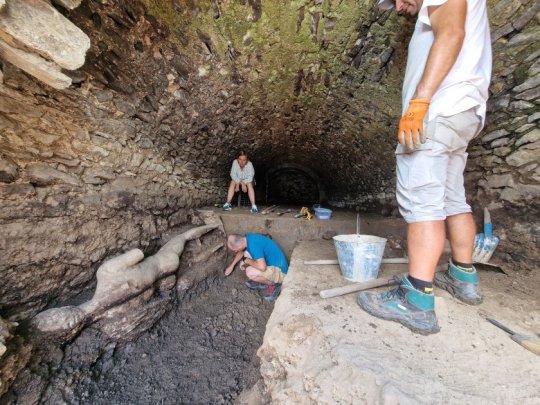
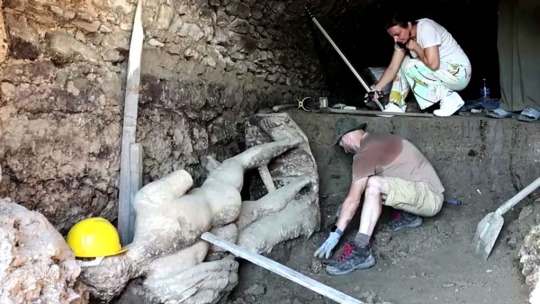
Plans are underway to carefully extract the statue from the Cloaca Maxima and transport it to the museum in Petrich, where it will undergo necessary restoration before being displayed alongside other archaeological finds. Prof. Vagalinski emphasized the challenges of preserving the ancient city's structures, especially those located on private property, where permanent conservation measures are limited. He highlighted the unexpected nature of the discovery, which came to light during routine inspections of the canal's condition.
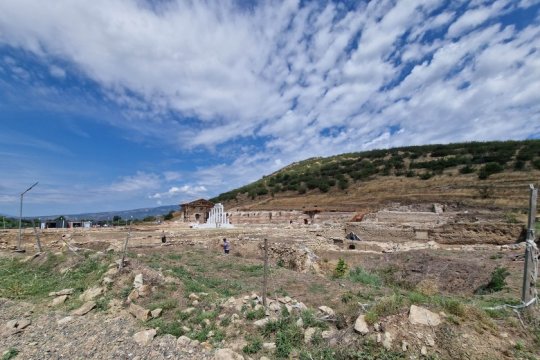
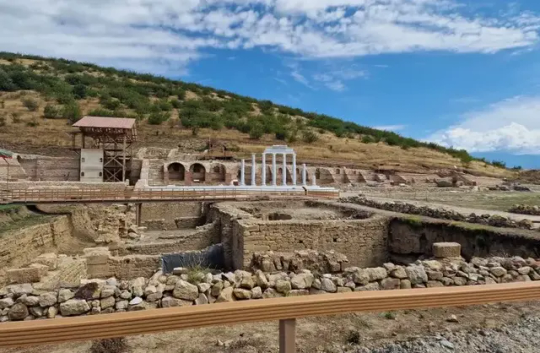
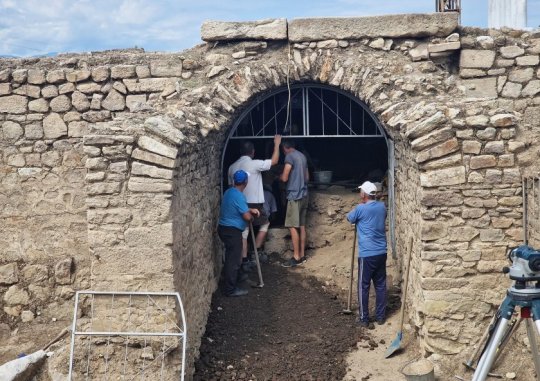
The excavation team, which first uncovered ancient structures in the area six years ago, had placed protective barriers to secure the site. Upon closer examination, marble remnants were noticed, leading to the gradual unveiling of the statue of Hermes. Work on fully exposing and documenting the statue will continue in the coming days, offering new insights into the religious and artistic practices of ancient Heraclea Sintika.
#Archaeologists Unearth Remarkably Preserved Marble Statue of Hermes in Bulgaria#ancient city of Heraclea Sintika#Petrich Bulgaria#Cloaca Maxima#marble#marble statue#ancient artifacts#archeology#archeolgst#history#history news#ancient history#ancient culture#ancient civilizations#roman history#roman empire#roman art#ancient art
330 notes
·
View notes
Text
Europe’s Largest Hoard of Copper Age Axes, Ax Hammers Discovered in Northeast Bulgaria
Europe’s Largest Hoard of Copper Age Axes, Ax Hammers Discovered in Northeast Bulgaria
The hoard of 22 copper axes and ax hammers from the 5th millenium BC weighs a combined total of nearly 12 kg, and is said to be Euroep’s largest Chalcolithic find of its kind. Photo: Ruse Regional Museum of History
A hoard of 6,500-year-old Copper Age axes and ax hammers – Europe’s largest such find so far – has been discovered by accident near the town of Polkovnik Taslakovo, Dulovo…
View On WordPress
#Aeneolithic#alloy#Archaeologia Bulgarica#archaeologist#ax#ax hammer#Balkan Peninsula#Black Sea coast#Chalcolithic#Chalcolithic Civilization#copper#Copper Age#Danube#Danube River#Dimitar Chernakov#Dulovo#Dulovo Municipality#Kodjadermen – Gumelnița – Karanovo VI#Late Chalcolithic#Lower Danube#metal casting#metal founding#Northeast Bulgaria#Polkovnik Talaskovo#prehistory#Ruse#Ruse Regional Museum of History#Silistra District#Silistra Regional Museum of History#Sozopol
4 notes
·
View notes
Text
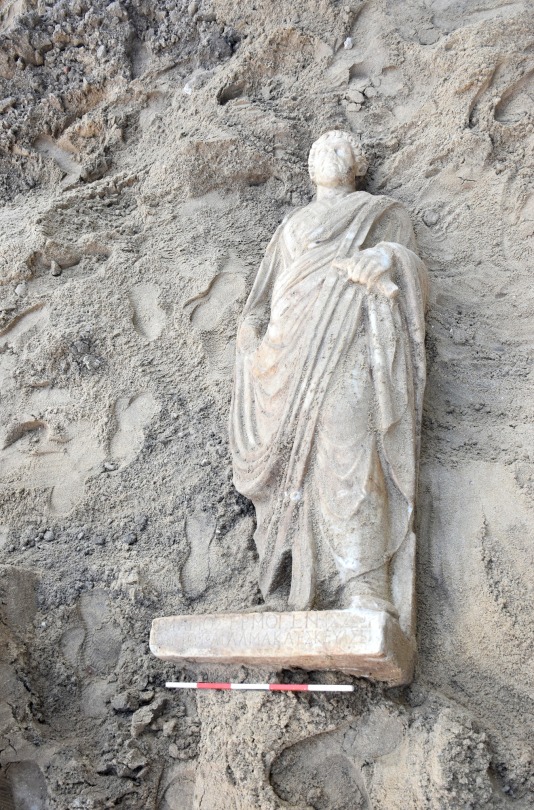
Roman Marble Statue Found in Bulgaria
Archaeologists uncovered a fully preserved statue from the ancient city of Odessos. Archaeologists from Regional History Museum in Varna (Bulgaria's biggest maritime city) reported this afternoon, October 15, about this exceptional find during the excavations of the ancient city - a marble sculpture from the Roman era, slightly taller than a human height.
It depicts a middle-aged man with a short beard, dressed in a toga, with a scroll in his hand. On the front of the pedestal there is a well-preserved inscription, and from a preliminary reading it is clear the name of the person depicted: G(ai) Marius Hermogenes.
The only part that is missing is the wrist and there is some minor damage to the face, so restoration is needed before it can go on display, Archaeologia Bulgarica said on its Facebook page.
The statue was discovered during construction work in an area of sandy deposits, outside the walls of the ancient city. It was promptly reported to the museum by construction contractor Georgi Kraychev. The sculpture is believed to be from the end of the 2nd and the first half of the 3rd century.
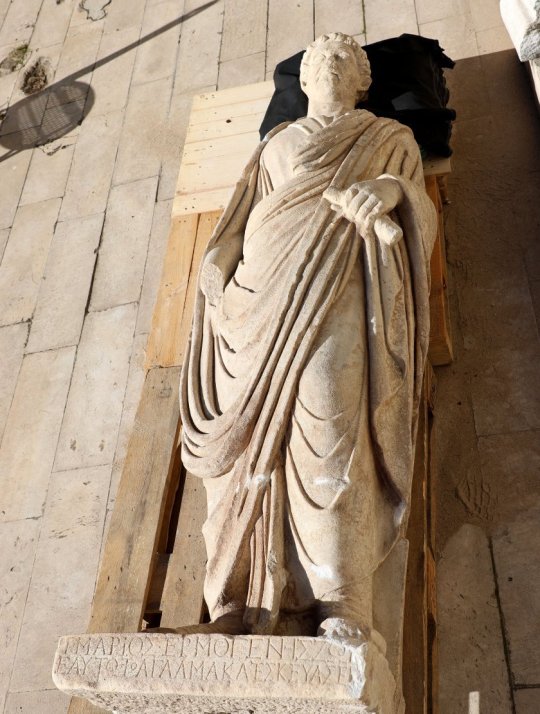
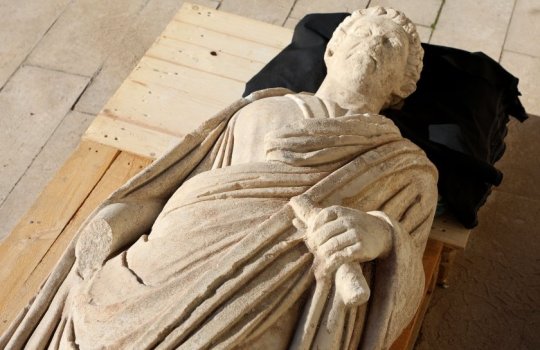
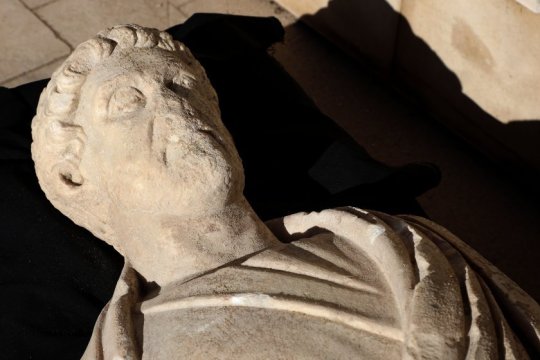
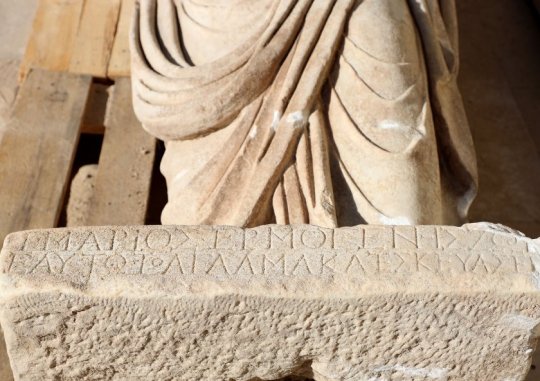
The present-day city of Varna, Northeastern Bulgaria, originated as a settlement named Odessos (Ὀδησσός) which was founded by Ionian colonists from Miletus around 600–550 BC. The Greeks established their colony on the site of an earlier Thracian settlement.
In 335 BC, Alexander the Great conquered almost the entirety of ancient Thrace, and Odessos became part of the Macedonian Kingdom.
Odessos flourished most significantlly during the Hellenistic Age (end of III – I BC), when the city served as a starting point of troops of the successor of Alexander the Great – king Lysimachus (323–280 BC) who proclaimed himself king of Thrace. Big public buildings like temples, theatre, gymnasium (school for boys) and others were built during this period. Due to the increase of Thracian population in the city, a temple of the Thracian god-rider Heros Carabazmos and a temple of Artemis Phosphoros were built in II – I BC.
In 15 AD, Odessos became part of the Roman Empire, in the province of Moesia (later Lower Moesia), and became its main port on the Black Sea (Pontus Euxinos). Huge and ornate warm baths (Roman baths), the fourth largest in Europe, were built 7000 square meters of land.
It was called Varna by the Ancient Bulgars after the First Bulgarian Empire conquered it in the late 7th century AD.
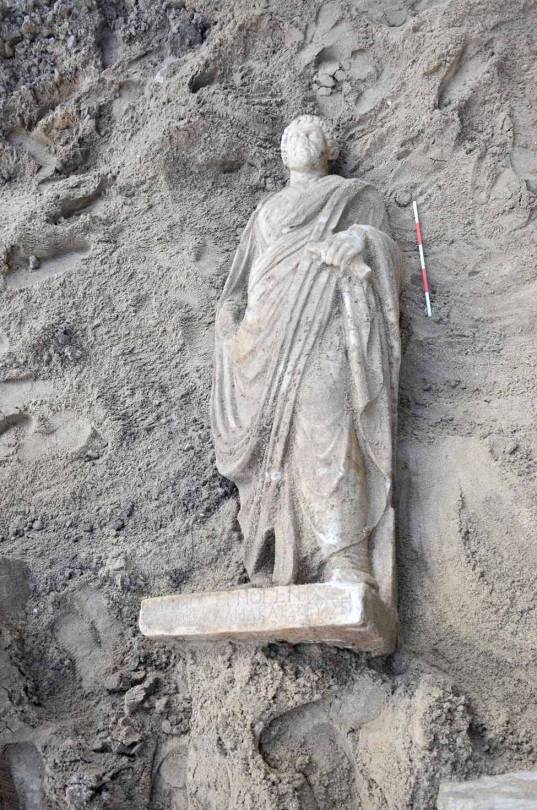
#Roman Marble Statue Found in Bulgaria#Varna Bulgaria#ancient city of Odessos#G(ai) Marius Hermogenes#marble#marble statue#marble sculpture#ancient artifacts#archeology#archeolgst#history#history news#ancient history#ancient culture#ancient civilizations#roman history#roman empire#roman art#ancient art#art history
59 notes
·
View notes
Text
New Board Game Pits Archaeologists against Treasure Hunters in Archaeological Sites All across Bulgaria
New Board Game Pits Archaeologists against Treasure Hunters in Archaeological Sites All across Bulgaria
The “Archaeologists vs. Treasure Hunters” board game developed by the Archaeologia Bulgarica NGO raises awareness about the daily battle against destructive treasure hunting in tens of thousands of archaeological, historical, and cultural sites all across Bulgaria. Photo: Archaeologia Bulgarica
A new board entitled “Archaeologists vs. Treasure Hunters”, which pits the two groups against one…
View On WordPress
#Ancient Rome#Ancient Thrace#Antiquity#Apollonia Pontica#Archaeologia Bulgarica#archaeologist#Archaeologists vs. Treasure Hunters board game#Black Sea#Black Sea coast#board games#burial mound#burial mounds#Danube#Danube River#Debelt - Deultum Archaeological Preserve#Deultum#emporion#forged artifacts#georadar (GPR)#Gotse Delchev#ground penetrating radar#Kozarnika Cave#Kyustendil#Late Antiquity#Lyudmil Vagalinski#Lyutitsa Fortress#Mesembria#metal detector#metal detectors#Middle Ages
1 note
·
View note
Text
Roman Magistrate’s Statue from ca. 100 AD Found by Archaeologists in Ancient City Heraclea Sintica in Southwest Bulgaria
Roman Magistrate’s Statue from ca. 100 AD Found by Archaeologists in Ancient City Heraclea Sintica in Southwest Bulgaria
The life-size statue of an Ancient Roman magistrate from around 100 AD has been discovered underneath the stairs of the Roman Forum of Heraclea Sintica, an ancient city in Bulgaria’s very southwest. Photo: Bulgarian Prime Minister’s Facebook Page / Archaeologia Bulgarica NGO & Journal
An Ancient Roman statuefrom the end of the 1rd – beginning of the 2nd century AD depicting a local Roman…
View On WordPress
#Ancient Greece#Ancient Rome#Ancient Thrace#Ancient Thracians#Archaeologia Bulgarica#basilica#Boyko Borisov#Bulgarian Prime Minister#Cassander#civic basilica#crane#epigraphist#European Transport Corridor No. 4#excavations#Greece#Heraclea Sintica#Hercules#inscription#Kingdom of Macedon#Late Antiquity#Latin#Lyudmil Vagalinski#magistrate#National Institute and Museum of Archaeology#Nikolay Sharankov#papyrus#Parthicopolis#Petrich#Petrich Municipality#Petrich Museum of History
3 notes
·
View notes
Text
Blond Roman Woman’s Statue Head Found in Ancient Heraclea Sintica in Southwest Bulgaria, Hints at Building Ritual
Blond Roman Woman’s Statue Head Found in Ancient Heraclea Sintica in Southwest Bulgaria, Hints at Building Ritual
The newly discovered statue head of a blond Roman woman from the ancient city of Heraclea Sintica in Southwest Bulgaria. Photo: Video grab from Archaeologia Bulgarica
The marble Ancient Roman statue head of a blond Roman woman has been found by the archaeologists excavating the Ancient Greek, Thracian, and Roman city of Heraclea Sinticanear Petrich in Southwest Bulgaria, with the discovery…
View On WordPress
#2018 Bulgarian Archaeology exhibition#Ancient Greece#Ancient Macedonians#Ancient Rome#Ancient Thrace#Ancient Thracians#Archaeologia Bulgarica#blond#Bulgarian Archaeology exhbition#Bulgarian Parliament Speaker#Cassander#excavations#Forum (Heraclea Sintica)#Greece#Heraclea Lyncestis#Heraclea Sintica#Kingdom of Macedon#Late Antiquity#Lyudmil Vagalinski#magistrate#marble#National Institute and Museum of Archaeology#needle#ochre#Petrich#Petrich Municipality#Petrich Museum of History#Roman Empire#Roman forum#Roman magistrate
0 notes
Text
3rd Century BC Decree Found on Black Sea Island Proves Ties between Ancient Greek Cities Apollonia Pontica in Bulgaria, Heraclea Pontica in Turkey
3rd Century BC Decree Found on Black Sea Island Proves Ties between Ancient Greek Cities Apollonia Pontica in Bulgaria, Heraclea Pontica in Turkey
The stone inscription decree provides evidence about the cordial relations between Apollonia Pontica (today’s Sozopol in Bulgaria) and Heraclea Pontica (today’s Karadeniz Eregli in Turkey). Photo: Archaeologia Bulgarica NGO & Journal
A rare ancient document, a decree of the assembly of the Ancient Greek colony of Apollonia Pontica, today’s Sozopolin Southeast Bulgaria, has been discovered during…
View On WordPress
#Ancient Greece#Ancient Greek#Apollonia#Apollonia Pontica#archaeologist#Attica#Black Sea#Black Sea coast#Byzantine Empire#Byzantium#Cape of Stolets (Scamium)#excavations#Greek colonies#Greek mythology#Heraclea Pontica#Heraclea Sintica#Heracles (Hercules)#Hercules#inscription#Karadeniz Eregli#Kazimir Popokonstantinov#marble#marble slab#National Institute and Museum of Archaeology#Nikolay Sharankov#Old Town Sozopol#Skamni Peninsula#Sozopol#St. Ivan Island#St. John the Baptist Monastery on St. Ivan Island
1 note
·
View note